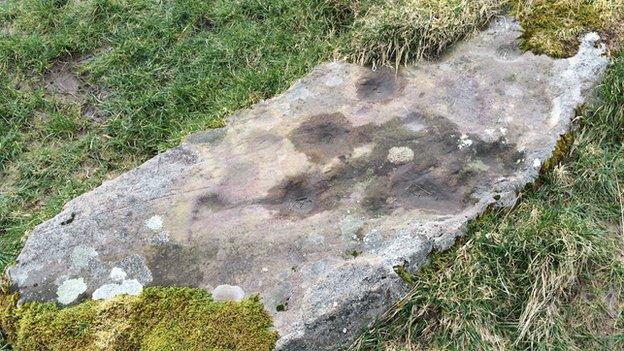Celtic Christianity: History of Welsh seat of learning revealed
- Published

The early medieval stones in the Galilee Chapel at St Illtud's Church, Llantwit Major
Llantwit Major may be known today as a dormitory town for commuters into Cardiff - but it was once regarded as the cradle of Celtic Christianity.
Some 1,500 years ago, Llanilltud Fawr - its name in Welsh - was known as the University of the Atlantic.
Around a century before Augustine became the first Bishop of Canterbury in 590 CE, and began consolidating Christianity in Saxon "England", Llanilltud was already spreading the gospel around the Celtic world.
The name stems from the first known head of the monastic university, St Illtud, in around 500 CE.
However, Philip Morris, former Archdeacon of Margam, explains in his book on Llanilltud: The Story of a Celtic Christian Community that the college was possibly much older than that.
"500 is the earliest date we can confirm for the existence of Llanilltud, though in all likelihood there was some seat of learning there dating back to the immediate aftermath of the Roman withdrawal in the late 4th and early 5th Century," he said.
"In pre-Roman times, as far back as the Bronze Age, south Wales and the Bristol Channel had been a key centre, linking together the Celtic people of Ireland, Wales, Cornwall and Brittany, with trading routes to Mediterranean Europe and the Middle East."
Archdeacon Morris explained that these links allowed knowledge to flow around the Celtic world, at a time when the Saxon kingdoms were looking eastward and mired in conflict.
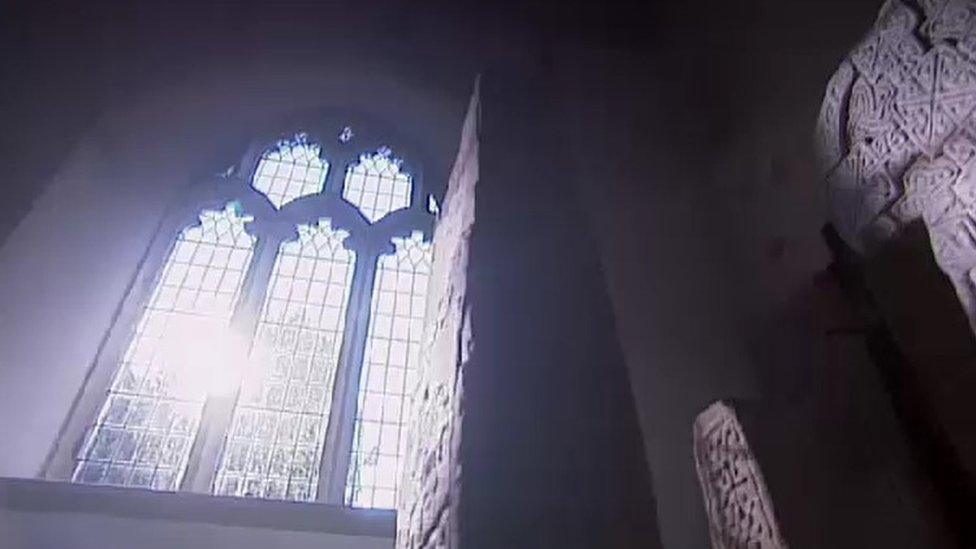
Inside St Illtud's church
Comparatively little is known about St Illtud himself.
He is thought to have been born in what we now call Wales, spent some time in Brittany, and may or may not have been some sort of warrior.
Archdeacon Morris said: "Illtud is far more widely venerated in place-names and churches in Brittany than in Wales, through the influence of his students having had a major impact on the Christian development there.
"He is described as having been a knight, though it's unclear how much of a fighting man he was. The evidence points more towards his reputation for learning."
At its peak in the 6th and 7th Centuries, Llanilltud taught not only theology, but also Latin, Greek, mathematics and geometry.
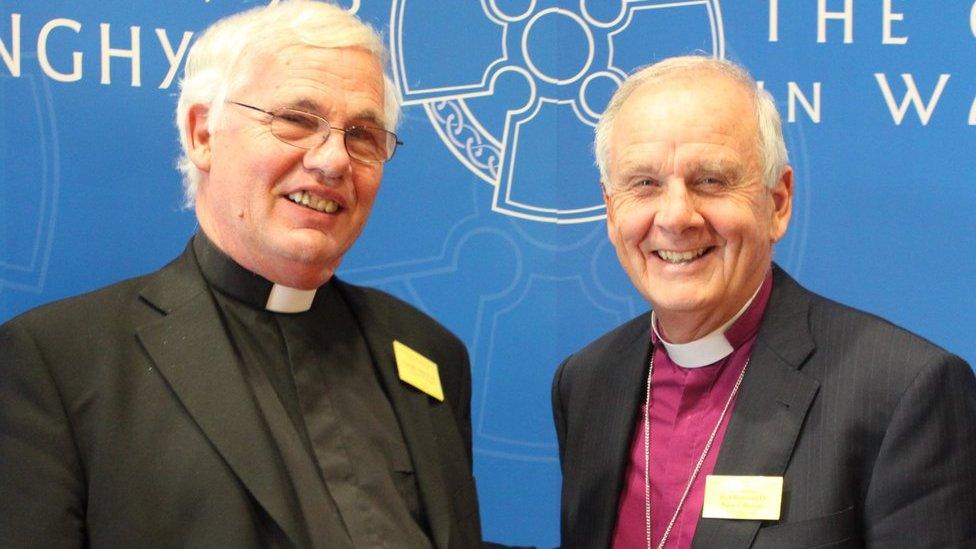
Philip Morris (left) with former Archbishop of Wales, Dr Barry Morgan
At this time, it is said to have boasted seven halls, 400 houses and over 2,000 students.
Among them were the sons of both Celtic and Saxon princes, as well as - possibly - some names still familiar today.
"Legend has it that the likes of St Patrick, St David and the bard Taliesin all spent time studying at Llanilltud," said Archdeacon Morris.
"I've been unable to prove that one way or the other, but given that Llanilltud was the foremost centre for monastic schooling at the time, you would have to say that it is possible, if not likely."
He added: "What is for sure is that the students of Llanilltud travelled far and wide, and helped secure the Christian faith all around the Celtic world."
Throughout its existence, Llanilltud was destroyed several times - first by raiding Irish in the 7th Century, then more seriously by the Vikings and Normans.
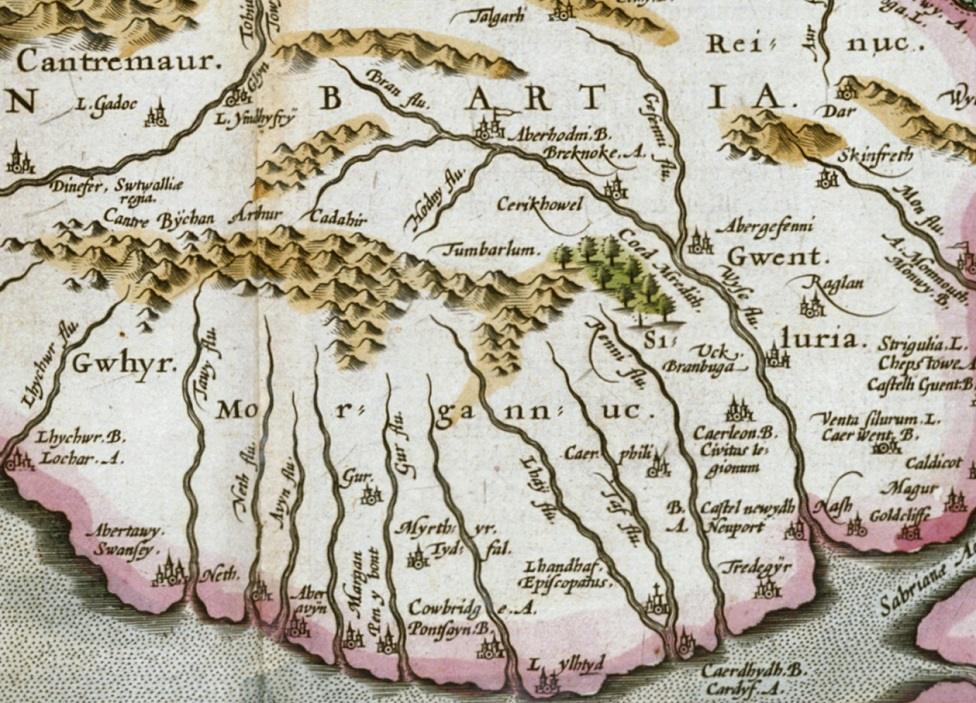
A section of a 17th Century engraved map by Flemish artist Jodocus Hondius showing Llanilltud on the tip of the south Wales coast
Even though the Normans later restored Llanilltud in the 12th Century and incorporated it into Tewkesbury Abbey as part of the property of the Norman knights in Glamorgan, its reputation and standards were much diminished after this.
"Although Llanilltud carried on as a monastic college until the 16th Century and the dissolution of the monasteries under Henry VIII, after the Norman Conquest you can see from the poor standard of Latin on stones and documents that it wasn't at the same level of excellence that it had been in its heyday," Archdeacon Morris said.
Nothing remains of the college today.

While St Illtud's Church remains in place the ancient college is long gone
However, the 12th Century parish church does still stand, along with its Galilee Chapel and collection of some of the most important Celtic Christian stones in the UK.
It was while overseeing the restoration of Galilee Chapel that Archdeacon Morris became passionate about spreading the Llanilltud story.
"Llanilltud played equally as big a part in the development of early Christianity as Iona did in Scotland or Lindisfarne in the North of England, yet so few people know about it.
"Hopefully now the restored Galilee Chapel, the sensitive display of the early medieval stones, and the interpretative panels will ensure that the memory of Llanilltud will be kept alive for future generations."
- Published18 July 2020
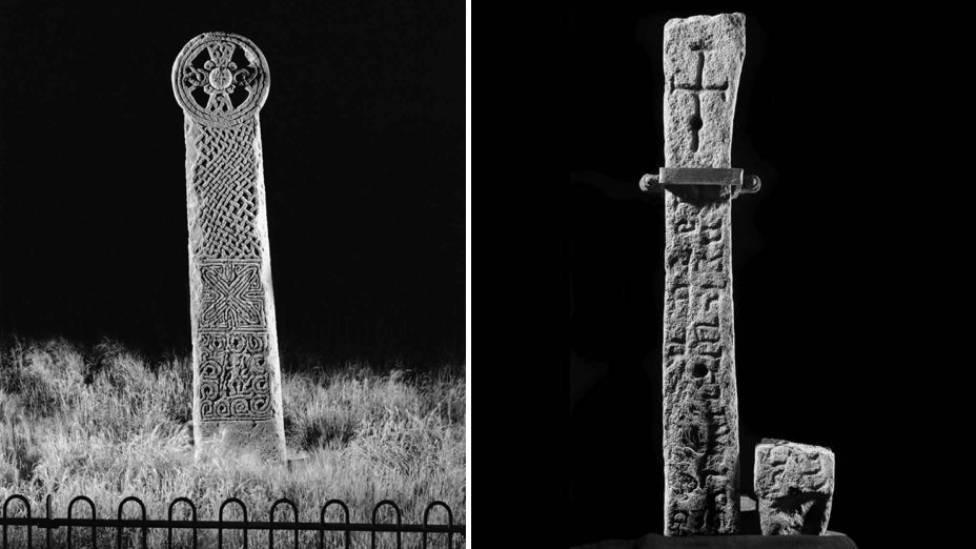
- Published8 October 2018
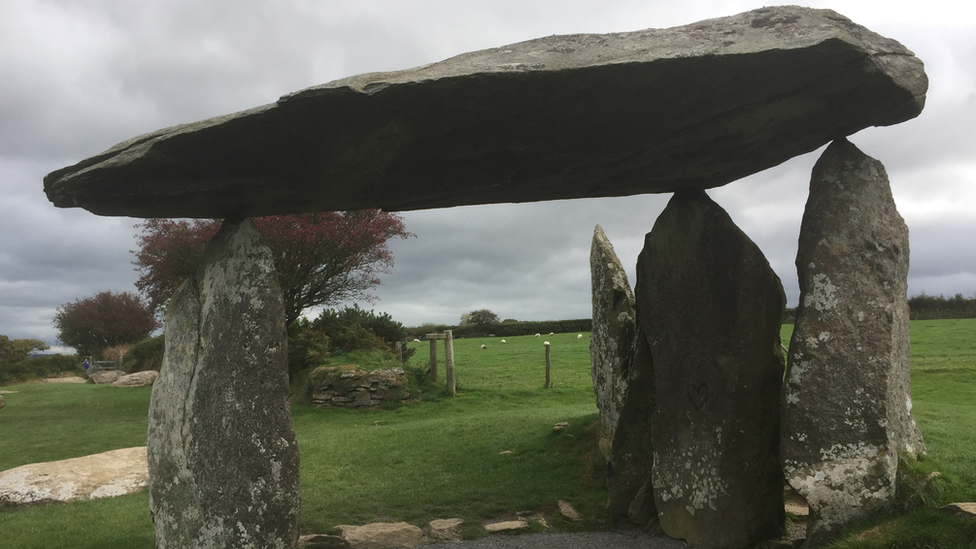
- Published6 March 2014
